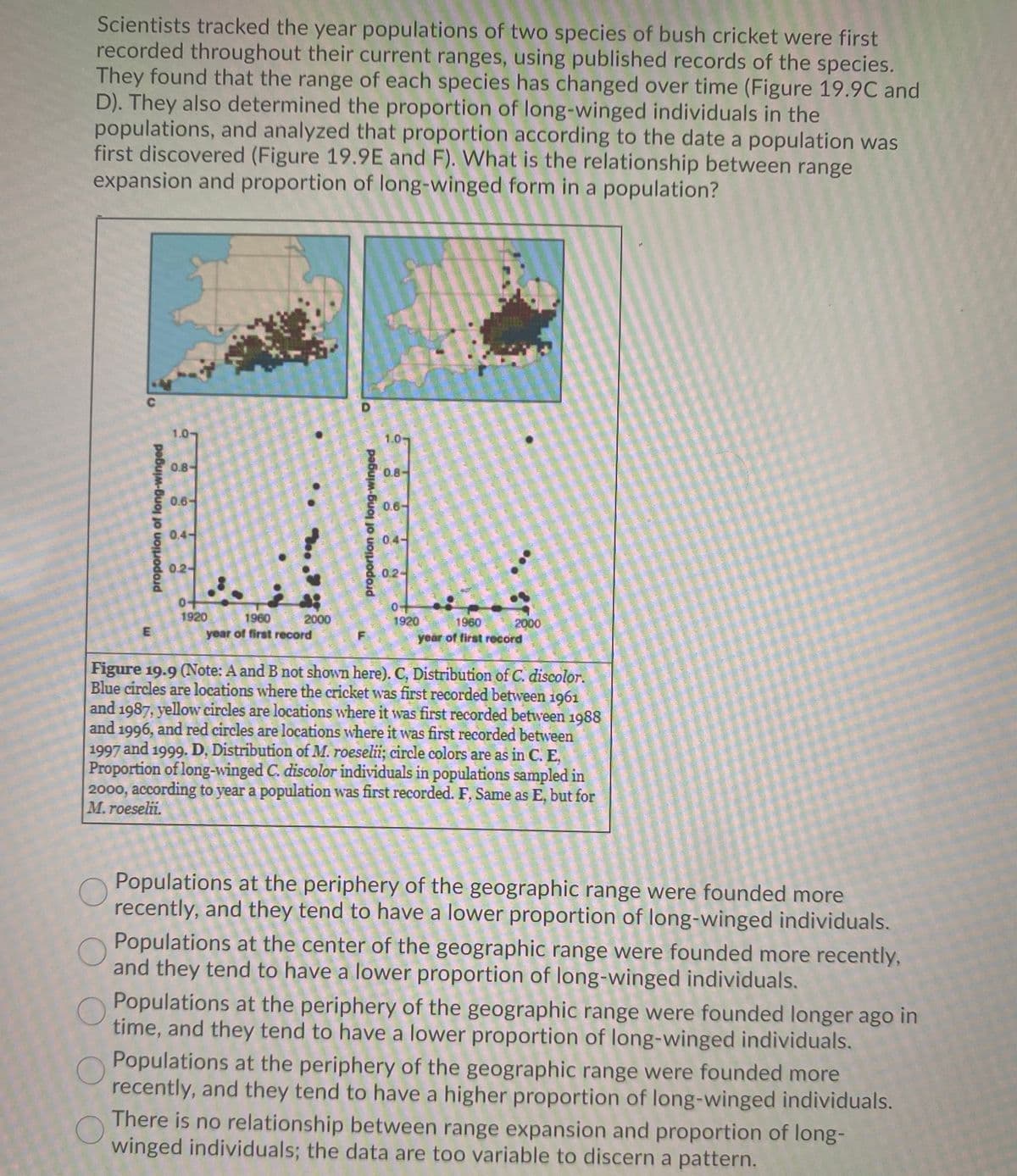Scientists tracked the year populations of two species of bush cricket were first recorded throughout their current ranges, using published records of the species. They found that the range of each species has changed over time (Figure 19.9C and D). They also determined the proportion of long-winged individuals in the populations, and analyzed that proportion according to the date a population was first discovered (Figure 19.9E and F). What is the relationship between range expansion and proportion of long-winged form in a population? 1.0- 1.0 0.8- 0.8- 0.6- 0.6- 0.4- 0.4- 0.2- 0.2- 0- 1920 1960 2000 1920 1960 2000 year of first record year of first record Figure 19.9 (Note: A and B not shown here). C, Distribution of C. discolor. Blue circles are locations where the cricket was first recorded between 1961 and 1987, yellow circles are locations where it was first recorded between 1988 and 1996, and red circles are locations where it was first recorded between 1997 and 1999. D, Distribution of M. roeselii; circle colors are as in C. E, Proportion of long-winged C. discolor individuals in populations sampled in 2000, according to year a population was first recorded. F, Same as E, but for M.roeselii. Populations at the periphery of the geographic range were founded more recently, and they tend to have a lower proportion of long-winged individuals. Populations at the center of the geographic range were founded more recently, and they tend to have a lower proportion of long-winged individuals. Populations at the periphery of the geographic range were founded longer ago in time, and they tend to have a lower proportion of long-winged individuals. Populations at the periphery of the geographic range were founded more recently, and they tend to have a higher proportion of long-winged individuals. There is no relationship between range expansion and proportion of long- winged individuals; the data are too variable to discern a pattern. proportion of long-winged proportion of long-winged
Biogeography
The study of plants, animals, and other living things in terms of their geographic distribution is referred to as biogeography. Biogeography is usually examined in coexistence with ecological and historical variables that have affected organisms' spatial distribution across time. It is not only based on the habitation patterns; it is also about the reasons that cause differences in distribution. Biogeographic studies divide the Earth's surface into diverse flora and fauna compositions, notably the continents and islands. Biogeography is a field of science, but physical geographers have made vital commitments, especially in flora. Biogeography is a multidisciplinary field of study that combines concepts and data from ecology, evolutionary biology, taxonomy, geology, physical geography, paleontology, and climatology.
Types of Climate
The weather pattern in a long-term process in a locality, region, or even over the entire globe is known as climate. Generally, it is decided by calculating an average of thirty years' weather in a region. In that sense, the weather and climate are different.
Biome
It is defined as a definite community of animals and plants residing together in a climate. Each (plants and animals) having a characteristic appearance and distributed over a wide geographical area defined largely by regional climatic conditions.

Trending now
This is a popular solution!
Step by step
Solved in 3 steps


